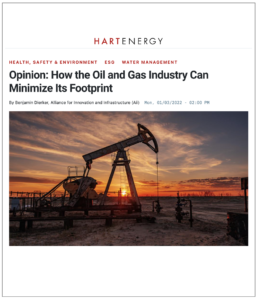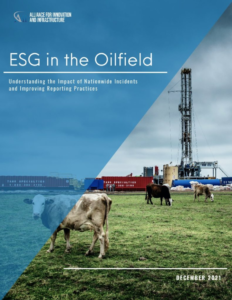How Oil and Gas
Can Minimize Its Footprint


"
To make progress in improving operations, the fossil fuel industry would benefit from better data, a regular survey designed to gain a granular understanding of incident rates, and detailed assessment of root causes leading to breakdowns.
"
How Oil and Gas Can Minimize its Footprint
Energy producers are instrumental in the critical supply chain for energy resources and manufacturing inputs. They are also key environmental stewards in extracting hazardous but necessary liquids and gases and ensuring their safe transport and storage. But spills and accidents still occur. Through implementing best practices, based on an accumulation of data, such accidents can be prevented, mitigated, and their risks reduced.
To make progress in improving operations, the fossil fuel industry would benefit from better data, a regular survey designed to gain a granular understanding of incident rates, and detailed assessment of root causes leading to breakdowns.
Produced water policy, reports, and data
With ESG frameworks sweeping the industry, executives and operators should focus on where the business happens: the production and gathering systems. There, different flowlines, separators, and tanks handle varied resources, such as crude oil, natural gas, and caustic produced water containing dissolved solids and other contaminants. Handling these substances with care serves to benefit the environment as well as a company’s profitability and reputation.
As of yet, detailed environmental impacts and performance metrics are not well reported.
Such data are limited in the upstream sector, and E&P operations are not always required to report incidents to the state or federal government.
Surveying state databases for marketable products (hydrocarbons) and waste (produced water) reveal that the industry and public policy treat well extracts with disproportionate levels of care and value, focusing on hydrocarbons and placing limited attention on the more copious and more caustic produced water.
Incidents with produced water are particularly critical because its salinity and other pollutants can permanently ruin agricultural land. In North Dakota, recent pipe and tank battery incidents have caused devastation for farm and ranch land where produced water has leaked. Avoiding these tragedies requires better oversight.
At the federal and state levels, oil and gas production is highly regulated and monitored, which means there is good data from mandatory reporting.
In contrast, produced water receives far less attention despite vastly outpacing the volume of oil and gas generated from a well.
To enhance environmental stewardship, policymakers should elevate multiphase production, produced water, and waste handling to a similar level with oil and gas. This will reduce land-threatening breakdowns but also provide better information on incidents.
If E&P data are more widely collected and reported—ideally voluntarily through an industry collaboration or by state agencies—then companies will be better equipped to invest most efficiently in streamlining operations and ensuring appropriate environmental safeguards are in place.
Currently available data from five states and validated by independent studies indicate the leading causes of produced water incidents are equipment and material failures across flowlines, separators, tanks and other facilities. These include corrosion, joint and fitting issues, pressure bursts, frozen or overheated lines, and more. Following material causes is human error, likely attributable to lack of training, poor judgment, and miscommunication.
With industrywide reporting and incident descriptions, E&P stakeholders will be able to discern the statistical incidence of internal versus external corrosion events, the type of gauges needed to avoid tank overflows, and what errors of judgment or miscommunication trainings can address.
These insights will help improve operations, minimize liability, meet ESG and shareholder commitments and, most critically, protect the environment, including farm and ranch land where oil and gas operations often occur.
Next steps
As leaders in empowering and supporting critical supply chains in America, the energy sector is poised to take a step forward in environmental stewardship. To do so, it will need to reassess the products, equipment, and materials used to handle both valuable hydrocarbons and wastewater to ensure they are handled with care and appropriately meet reporting standards.
From there, better incident and performance data will help chart a path to efficient investment in equipment, materials and training best suited to avoid the known root causes of pipeline and wellpad breakdowns.
About the author: Benjamin Dierker is the director of public policy with the Alliance for Innovation and Infrastructure (Aii).

